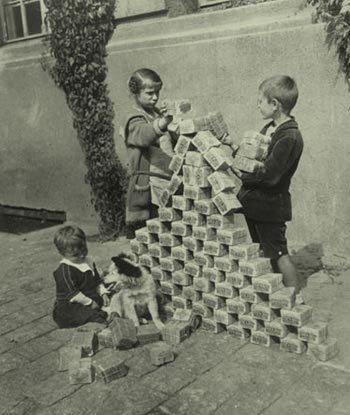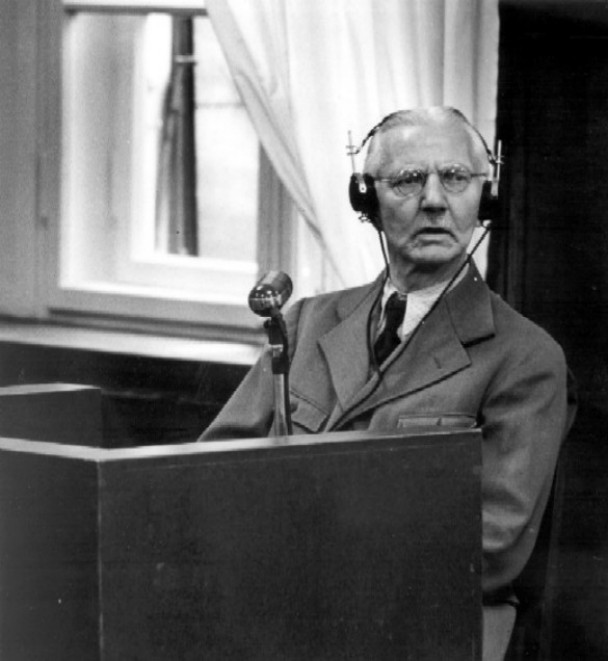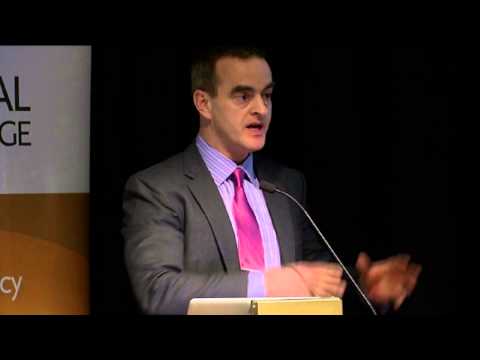One of the delights I have had recently has been talking to a guy who has done a PhD in communication during financial crises. Naturally he had been reading Marx and Minsky and a thousand other authors over his ten years doing his PhD. He said that Marx talked about a M-C-M circuit. This means money to commodity to money. Money helps people buy and sell items of value. Then in 1971 Nixon delinked the dollar from gold and we had the rise of the financial industry.
As the financialisation of the economy has grown where money trades directly with money it is a M-M circuit. While in the M-C-M circuit has in it time lags, the M-M circuit is quicker. You make money out of money. The M-M circuit is more efficient and more profitable. The dotcom bubble was about money transactions, Enron got into finance. The M-M circuit has superceded the M-C-M market.
Hyman Minsky said that on a system level you go from a hedged position to a speculative position and eventually to a Ponzi state. The bubble has to keep growing. You have walked too far across a frozen pond and can’t go back. The mood swings to irrational exuberance and greed. Eventually the bubble bursts, asset prices drop and down you go.
Money really isn’t supposed to be a commodity. It is something we use to trade with and we agree to accept from one another. Fundamentally, because it is a human invention, it is and always will be secondary to the real world it serves. It is the flows of resources that are important in a system, not the flows of money. It is in the resource flows that a thriving economy should have no waste.
 Anyway, then I was keen to find out about the Rentenmark, because my friend Adrian Wrigley had told me he believed there lay a key of how to get a currency backed by land. But since Adrian has now died and I was curious, I decided to find out as much as I could myself. I found quite a lot on the web, with authors Adam Fergusson writing When Money Dies and Gustavo Franco, The Rentenmark Miracle, Michael Kumhof and Jaromir Benes had obviously studied it while writing the Chicago Plan Revisited. Edward Norman Peterson had written Hjalmar Schacht: For and Against Hitler. All on the web, which is great these days.
Anyway, then I was keen to find out about the Rentenmark, because my friend Adrian Wrigley had told me he believed there lay a key of how to get a currency backed by land. But since Adrian has now died and I was curious, I decided to find out as much as I could myself. I found quite a lot on the web, with authors Adam Fergusson writing When Money Dies and Gustavo Franco, The Rentenmark Miracle, Michael Kumhof and Jaromir Benes had obviously studied it while writing the Chicago Plan Revisited. Edward Norman Peterson had written Hjalmar Schacht: For and Against Hitler. All on the web, which is great these days.
 The Rentenmark was an emergency currency brought in by Germany in November 1923, when the hyperinflation of the 1913-1923 decade had brought the country to its knees. Reading about the social chaos during that post World War One period makes your hair stand on end.
The Rentenmark was an emergency currency brought in by Germany in November 1923, when the hyperinflation of the 1913-1923 decade had brought the country to its knees. Reading about the social chaos during that post World War One period makes your hair stand on end.
Germany up till 1913 had used very stable goldmarks fully backed by gold. In 1913 only a third was backed by gold but by 1914 it was unbacked and called papermoney. Towards the end the First World War Germany set up private loan banks were set up to protect the country’s gold reserves. These were to give credit to businesses, to the state, municipalities and to new war corporations. (It is often wrongly stated that the government created all this new money, but it was in fact private banks) Loan bank notes were made legal tender. The Reichsbank could include three month Treasury bills in its note coverage, so that unlimited amounts could be rediscounted against bank notes. (Have I lost you? I can’t understand that either, but I gather the discounting was a disaster).
Then Germany proceeded to its descent into hell. Inflation picked up speed when the British demanded reparation in gold of 2 billion goldmarks a year, plus a quarter of their exports. Each year and with each crisis, more money was printed until by late 1923 $1US was worth 4.200,000,000,000 papermarks.
What happened during those years was a complete nightmare. Those who had precious items like gold, furniture, jewels, artworks exchanged it for food. A doctor’s wife gave her piano for a sack of wheat, a gold watch was given for four sacks of potatoes. Artworks were exchanged for bread.
Those long on gold, land and other real assets were seen enjoying Germany’s finest restaurants while wearing the most expensive of clothes.
Farmers refused to take any form of paper money for their crops. The harvest of 1923 sat in farmers’ warehouses while supermarkets in the cities were empty. Urban people came to the country to demand food.
The Government had tried everything. In 1922 a private rye rentes bank (Roggenrentebank) had been founded; it issued its first bill of exchange denominated in pounds of rye in December of 1922. In the beginning of 1923 several public bodies – cities, states and public utilities’ companies – started to issue loans denominated in commodities such as rye, coal, and others, but priced and serviced in marks according to the current commodity prices.
Reduced to a barter economy only, far right was pitted against far left, town against country, class against class, race against race, trade against trade and husband against wife. It brought out the worst in everybody, according to Fergusson.
Farmers accused of hoarding food were savagely attacked by urban hungry. Farmers sometimes bought up others crops and sold them for double the price. Jews were resented and blamed. Foreigners with overseas currency lived in luxury. Debtors were advantage over those with assets. There was a massive strike in the worst hit area, the Ruhr valley.
Anyway a very well educated economist and banker Hjalmar Schacht was appointed to fix it during that nightmare of November 1923 and given near dictatorial powers. One account from his secretary said he “sat in his room and smoked. Did he write letters? No he didn’t. He telephoned and he smoked.”
Hjalmar Schacht decided to do something new. He established a Rentenbank which was to create a new currency called the Rentenmark. It issued mortgages to farmers and those with industrial properties. Even though those with mortgages do well during hyperinflation and mortgages are easily paid off, from what I can gather they now badly needed to remortgage their properties to get cash. A huge quantity was printed very quickly and it didn’t cause inflation. So why did it work? Some make no attempt to explain. Many authors simplisticly explain in terms of the restrictions on the amount printed, or, as Michael Kumhof and Jaromir Benes said, the fact that Schacht also stopped the converting of private monies to Reichsmark on demand, he stopped granting Reichsmark loans on demand, and furthermore he made the new Rentenmark non-convertible against foreign currencies. True. He also cut government spending. However remember that in one act the government bank created 2.4 million Rentenmarks, and 1 Rentenmark was equal to a trillion old papermarks. That should have produced inflation. But it didn’t. Not a scrap of it. One writer basically said it was a coincidence, recalling that the Assignats of the French Revolution hadn’t worked, and then shrugging “Then the property backing seemed to give the currency value.”
The effect was dramatic. Farmers released food to warehouses for sale in the cities. The riots stopped. Skilled unemployment, which had risen to 28% by Dec 1923 dropped to 8.6% by May 1924. Real wages grew.
No it worked because if you back a currency with land, you back it with something that doesn’t go away, something solid and permanent. But not just that. If you remortgage the land, the occupier has to pay fees to the bank (in this case a government owned development bank) So the money goes round in a full circle at a steady pace. The mortgage payment, because it is to a government agency goes to the Government and it acts like a land tax in its early years. Sure since there was no way by which property could be foreclosed or distributed, it seems rather a strange way of backing money. But so is gold. You back a currency with gold but owners of gold don’t come for the gold and use that as money. But it works. I am not sure of the relationship between the Rentenbank and the treasury but I guess sometime I will find out.
I think this scheme is the nearest there has been in history to a land backed currency. It is as though the government bought the land (though they did buy the improvements too in this case) and then rented it to the farmer. “We will pay for your land as long as you pay us a fee of 5% per annum.”
So here I am, having realised how utterly critical it is to avoid inflation. I am extremely grateful that during my lifetime there has never been hyperinflation where I live. Thank you central bankers for that. And I realise how critical food is.
But I also believe that the Rentenmark miracle has not yet properly been explained in terms of the theory of money going round an economy. In this case it was created by a public bank and went back to a public bank. Those in the complementary currency movement have always been looking for commodities to back their currency with. Metals are probably better than food products. But what better than having a national currency backed by land? Then those who have the privilege of living on a bit of land can pay their rent to government and the money will go round and there will be no inflation.
Hyperinflation is the hell on earth, food is critical and all food comes from the land. Money is important but food is more important. If money is designed correctly and backed by land, we all benefit.
Incidentally, the rentenmark was never a legal currency, just an emergency one. Another gold backed reichsmark was established in August 1924. The rentenmark continued to be used until 1948.





